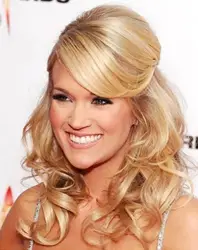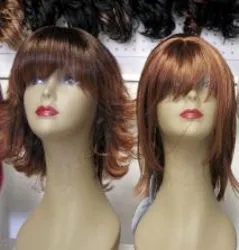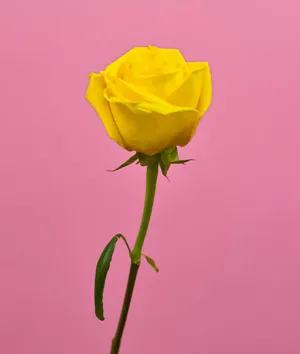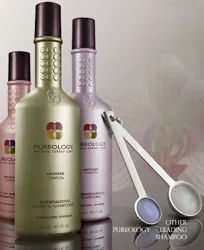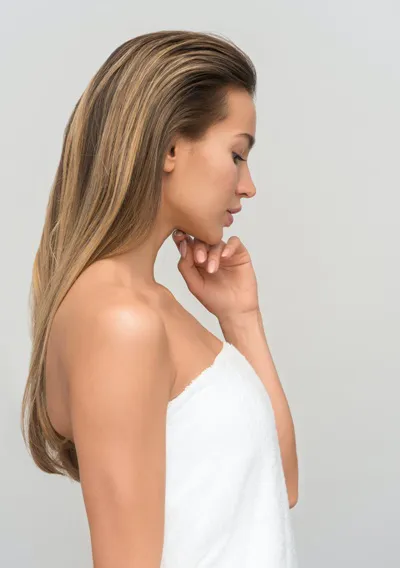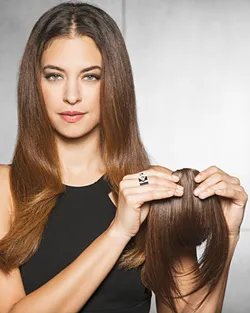
Cancer & Hair Dyes - A Connection?
Introduction
Never mind that permanent hair dyes with a high chemical composition may stress and dry out your hair. An even more important concern with hair dye is whether or not there's a direct connection between cancer and hair dyes? What do hair dyes do to the hair besides causing damaged or destroyed hair follicles.? A large percentage of both American men and women use permanent hair dyes of some sort. Since the current population of Baby Boomers is aging, the number of people dying or coloring their hair in the US has been increasing steadily. The US Census Bureau estimated that over 22 million women dyed their hair by the year 2003. It's estimated that one in eight men between the ages of 13 and 70 use some form of hair dyes to color their graying hair and beards. This number is increasing by the year. Hair dyes and related products is very big business. Commercial dye-makers sell over $7 billion dollars worth of hair dyes worldwide every year. Are Hair Dyes Carcinogenic?
So what else can hair dyes do to you? If you believe many of the scientific studies that have been done over the past 20 years, hair dyes may be carcinogenic. Why? Hair dyes are applied directly to the scalp, nearest the root. This is the location in the entire human body where the blood supply is the richest. It's also where the blood supply may carry any carcinogenic components right into the blood stream. So can hair dyes cause cancer? It depends on whom you listen to and what you believe. Many scientists and natural health care practioners believe the chemicals in hair dyes, especially the dark colored permanent dyes, are easily absorbed into the body via the scalp. Once absorbed into the body these dyes have a tendency to become concentrated in the bladder. Dark hair dyes are of particular concern because they contain a much higher concentration of chemicals than the lighter dyes. There is some good news. Although dark colored strong permanent hair colors may be dangerous to your health, bleaching agents have not been proven to be carcinogenic. Neither have the nonpermanent vegetable based dyes or henna of any kind.
Is There A Higher Risk Of Cancer With Dyes?
Realms of scientific and health related studies have been performed to determine whether hair dyes do indeed increase the risk of developing cancers in humans. There is so much conflicting information from these various reports that it is hard to figure out what does and doesn't increase the risk of cancer. How do you know how to determine what is dangerous and what isn't? Basically the only thing anyone can do is to study the research and talk it over with a knowledgeable health care professional. Once you have done your homework you must follow your own personal instincts. After reading many of the report summaries I think I have gotten a handle on figuring out the "official" scoop on whether dying your hair will increase the risk of developing cancer or not. Keep in mind all of the reports seem to have somewhat different opinions, although they do seem to agree on some common results. Hair Dyes & Breast Cancer - 1992 StudyIn 1992 the Annals of Epidemiology studied 1,617 women with primary breast cancer and an equal number who did not have breast cancer. The 1992 study concluded that there appeared to be no significant risk for women who ever used hair dyes.
Furthermore, the study looked at how the age when hair dye use was started, or ended, as a factor. The study also found that there did not seem to be any correlation to the number of years that hair dye was utilized or even how often the dye was used. There also did not seem to be any correlation to the age that the hair dye was first used. The study summarized that there appeared to be no significant risk for using hair dyes. Hair Professionals Are At Highest RiskA 1991 study that was published in the American Journal of Epidemiology came to the same general 1992 findings. It concluded that there was no significant risk to consumers who used permanent hair dyes. However, the 1991 study found that hairstylists had triple the risk of developing breast cancer when they worked with hair dyes of any sort for five years or more. The 1991 study pointed out that hairstylists that used hair dyes on their customers had a much higher exposure to the chemicals than the actual customers. This is because the stylists not only mixed the chemicals which could generate fumes, but they also applied it to the customer's hair and would be closer to the chemicals than the customer. Although the 1991 and 1992 studies showed a direct link to potential breast cancer for hairstylist that used hair dyes on their clients, it did not show a significant link for the actual customers. Studies Published in 1994
According to the 1994 March Medical Sciences Bulletin published by Pharmaceutical Information Associates, Ltd. "since certain chemicals in hair dyes are mutagenic in vitro and carcinogenic in experimental animals, the American Cancer Society decided to examine the incidence of cancer in women who dye their hair, using data from a large cohort study begun in 1982. Among 573,369 women monitored for more than 6 years, there were 9435 confirmed cancer deaths". Analysis of the data revealed that permanent hair dyes did not increase the overall incidence of cancer. "Even long-term use of permanent hair dyes did not appear to increase the risk of fatal cancers of the mouth, breast, lung, bladder, or cervix. Long durations of use were actually associated with a decreased risk of urinary system cancers." "The study did find that women who used black hair dye for 20 years or more showed an increased risk of developing non-Hodgkin's lymphoma and multiple myeloma." These findings which included both the possibility of increased risk of non-Hodgkin's lymphoma and multiple myeloma and the lack of increased risk for other cancers supported the results of previous studies. Most Recent Studies
A 1995 European Journal of cancer Prevention examined 17 different studies that looked at the cancer risks of hairstylist and barbers. This study also found that the hair professional had a higher risk of developing cancer than the hair color customer. The results of 1995 studies indicated like the 1994 American Cancer Society that breast cancer was not the only risk. Bladder cancer, non-Hodgkins lymphoma and bone marrow related cancers had a higher incidence in hair care professionals that had worked with hair dyes on a frequent basis for an extended period of time. A recent study (1998) looking at the use of permanent hair dyes and cancer again did not find an association between such use and hematopoietic cancers (cancers of the blood or lymph systems). The study, by a team of researchers from Brigham and Women's Hospital in Boston, involved more than 99,000 women. The study's findings differed from the results of at least eight earlier studies which indicated that women and men who dyed their hair frequently might be at increased risk for hematopoietic cancers. The early studies showed an association between hair dye use and increased risks for multiple myeloma (cancer of cells in the bone marrow), non-Hodgkin's lymphoma (cancer of the lymph system), and leukemia (cancer of blood-forming cells) in both sexes, and ovarian cancer in women. If there was a cancer risk associated with hair dyes, all the studies indicated that increased risk might be restricted to long-term or frequent hair dye users, particularly users of dark hair dyes.
One result seemed consistent throughout all of the years of research. Several studies of cosmetologists and other persons who applied hair dyes to others, as part of their work, showed them to be at increased risk of non-Hodgkin's lymphoma, multiple myeloma, and leukemia. Conclusive Link Between Cancer And Hair Dye?Does hair dye cause cancer in people who use it? The overall epidemiological studies are mostly reassuring. A large survey by the American Cancer Society found that dye users had a slightly lower rate of fatal cancers than people who didn't color their hair. With one noticeable exception. People who used dark hair dye for two decades or more had a four times greater risk of dying from two cancers of the immune system, non-Hodgkin's lymphoma and multiple myeloma. Is there a conclusive link between cancer and hair dyes? The experts seem to disagree. Detailed studies are continuing. For the most part the findings are still inconclusive. The most common belief is that hair color professionals and people who use dark colored permanent dyes may be at the highest risk of developing cancer after periods of extended involvement with the dark dyes. Chemist John Bailey, Ph.D., Director of FDA's colors and cosmetics program, notes "studies raise some questions about the safety of hair dyes," he says, "but at this point there's no basis for us to say that hair dyes pose a definitive risk of cancer. Dr. Andrew Weil Advises Against Hair Dye Use
Although the studies seem to only warn against dark colored permanent dye and occupational hazards, Dr. Andrew Weil, the natural health care guru, advises against any use of hair colors or dyes whatsoever. Dr. Weil believes the color additives in hair dyes "are energetic molecules which can interact with DNA, potentially causing mutations which lead to cancer." Many natural health care experts agree with Dr. Weil and recommend if you must color your hair do it as naturally and as infrequently as possible. Consumers, when possible, should look at less toxic options such as all natural coloring agents available at the health food stores or vegetable based colors. SummaryIn the final analysis, consumers will need to consider the lack of demonstrated safety when they choose to use hair dyes." Bottom line, weigh your various options. If you're a professional hair colorist consider wearing heavy plastic gloves and a mask to protect against fumes. Try to schedule your color work so you have a break in between applications. Remember, before you make any final decisions about what is best for you, your hair and your body, it's important to research your options. - Revised Date: 11/10/11 | ||||||||||||||||||||||||
| If you want to talk more about this or other hair care articles on HairBoutique.com or anywhere else, please post a message on HairBoutique.com's Hair Talk Forums.
|
Social Media Network Information
Please follow us on Twitter at: https://Twitter.com/HairBoutique. I look forward to meeting new people from all walks of Twitter and learning from their Tweets.


